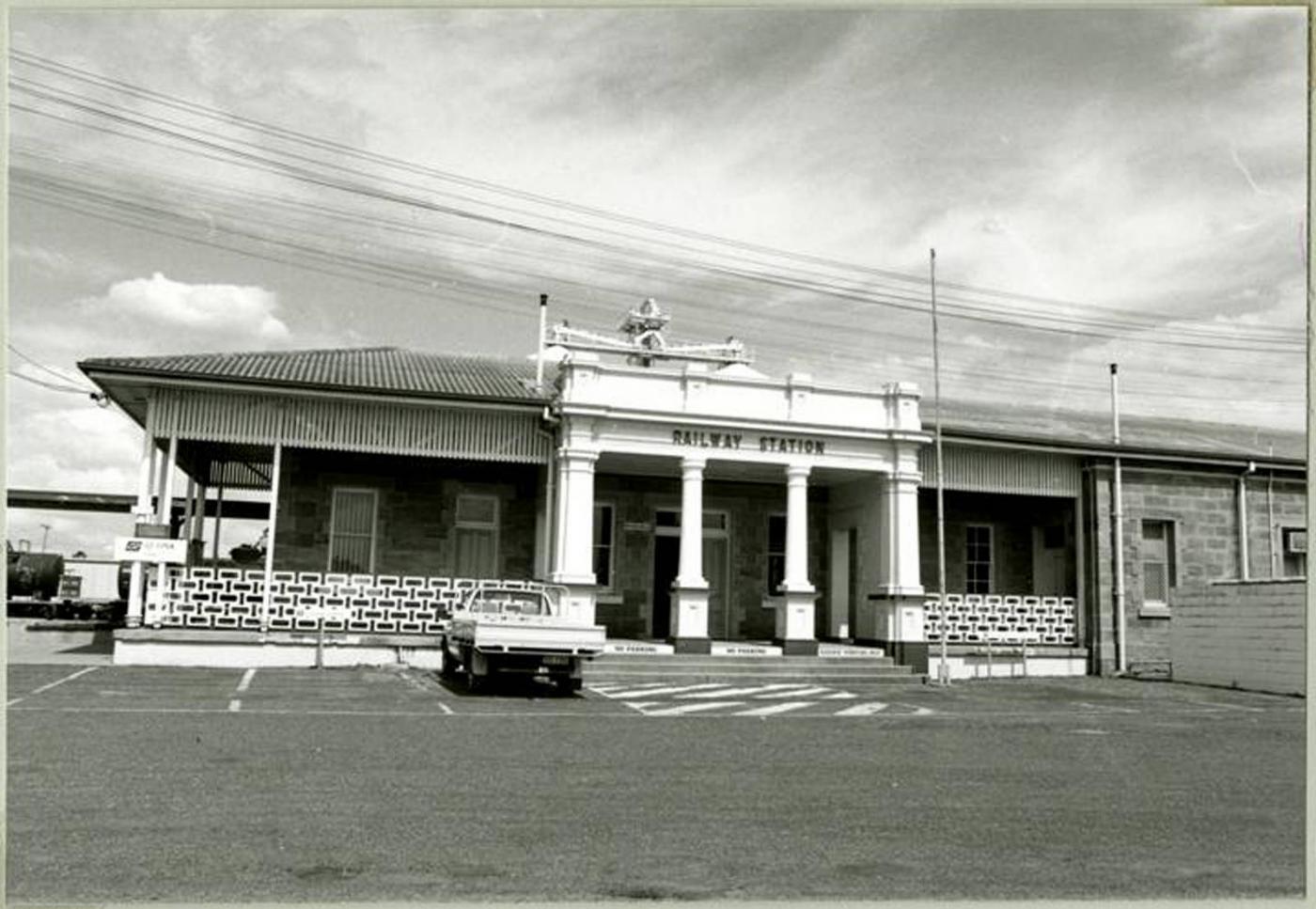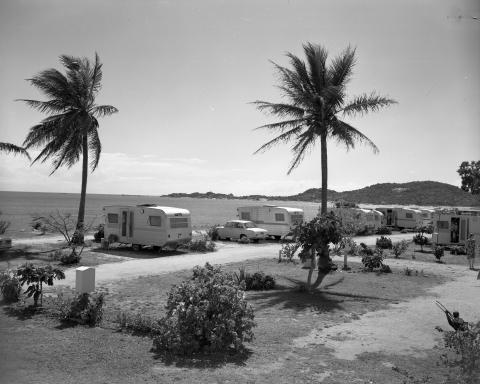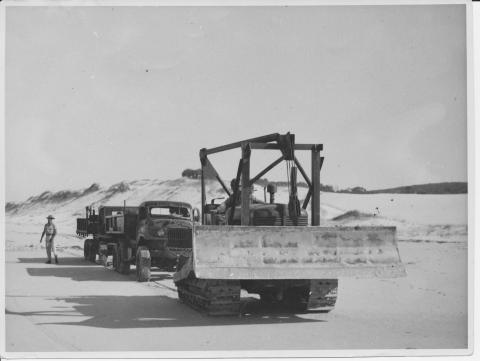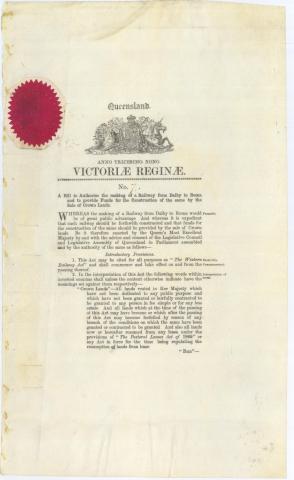
- News of the day
-
Warwick Examiner and Times, Saturday 11 April 1885, page 2
THE NEW RAILWAY STATION.
(To the Editor of the Examiner and Times.)
SIR, – I noticed in last Saturday's issue of your paper that the Commissioner for Railways was to have passed through Warwick during the present week. I wonder if the Progress Committee took advantage of his presence here (if he came), and laid before him the urgent necessity for the removal of the railway station to a more convenient site. So much has been said on this subject that it has almost become threadbare, but still the fact remains that we want a more central railway station, that we are justly entitled to it, and that we have had the promise of it. No matter what, the departmental delay may be, it is not a sufficient excuse for incommoding a large number of people – and more especially so when bungling or political influence was the means of having the station erected in its present unsuitable position. It is high time the people of Warwick rolled up en masse and demanded their rights, for it would seem that until they do so those rights will be trodden under foot and forgotten by the powers that be. Were a calculation gone into of the expense to business men for haulage per annum, I am certain that it would take a great many by surprise. The people of Warwick must help themselves, and then they may expect to get assistance from Government : until then the chances of the station being removed are very remote. Let any Minister of the Crown come to Warwick and settle here in business, and I am sure that in less than six months the erection of a more central railway station will be commenced. Let us then be up and doing, and let the Progress Committee not rest satisfied until this important item on their programme is carried out. – Yours, &c.,
BUSINESS HAN.
Warwick, April 2, 1885.
- Background
-
The Warwick Railway Station is an amalgam of buildings dating from the mid 1880s, when this site became the principal railway station in Warwick. The buildings include a sandstone goods shed and passenger station, a turntable, various staff dwelling and recreational buildings, warehouses and a goods sale yard complex.
Warwick was established as an administrative centre of the emerging Darling Downs regions in 1847, with a post office being established in the town in 1848. This year saw the first survey work of the embryonic town completed by surveyor, JC Burnett, with further surveys in 1850, and the first sale of crown land in July 1850. On May 25, 1861, Warwick was granted the status of a municipality, and discussions were held soon after concerning the introduction of the railway which was in primary stages of planning in Queensland.
The first rail line in Queensland, between Bigge's Camp (later Grandchester) and Ipswich, opened in 1865, and it was always the intention of the early Queensland Government to extend the line to provide the pastoral land to the west of Ipswich with a rail link. The line extended to Toowoomba in 1867. A contract was let for the extension of the rail line from Toowoomba to Warwick in February 1866.
This contract was awarded to David Williams of Muswellbrook, New South Wales for £267,566. But with the financial problems of 1866 the first section of this extension, from Toowoomba to Allora was not opened until March 1869 and from there an extension to Warwick was completed for the grand opening attended by the Acting Governor on January 10, 1871.
One of the principal forces shaping the government's construction of the line from Toowoomba to Warwick was the minimising the cost involved, and hence, the cheapest possible route was chosen. This explains why the location of the first terminus at Warwick was chosen to the north of the town and thereby not requiring a bridge over the Condamine River. This initial terminus, known later as Mill Hill, was furnished with a stone goods' shed and timber station building, but was only a temporary facility as the location of the Warwick terminus was resited when plans for extension of the train line were realised.
The discovery of tin at Stanthorpe prompted the government to make surveys for extending the train line from Warwick to Stanthorpe in 1873. This extension made necessary the construction of a bridge across the Condamine River and therefore another railway station was established closer to the settlement although both stations continued for some time simultaneously. In 1885 this second station became the main terminal station at Warwick and has remains so to this day. It is this second Warwick Terminus which forms the basis of the present study. The extension of railway was opened on May 3, 1881 at which time a platform and closets were erected. A shelter shed was erected on the site in 1882.
The station was known as the East Warwick Railway Station until 1885. A plan was instigated in that year for the redevelopment of the newly deemed terminal station, which was fortunate as the former station buildings on the site were destroyed by fire on 10 August 1887 just as the redevelopment plan was nearing completion. This redevelopment was spurred by the planned extension of the line to the New South Wales border, agreed to by Parliament in August 1884. Warwick was planned as a major station on this route.
Tenders were called on June 22, 1886 for the construction of a passenger station and goods shed at the new Warwick terminal station. The contract for the goods shed was let to MT O'Brien for £2710 and for the passenger station to R Godsall and others for £5624. A 40 foot turntable was also planned for the Warwick Railway Station at this time. These were the second set of tenders called for the station buildings as the previous tenderers were all too high.
A report in the Warwick Examiner and Times published on October 12, 1887 describes the progress on the redevelopment plan of the site. Implicit in this report is the frustration felt by the local Warwick community over the lack of official commitment to the project, supposedly manifest in the 'passable appearance' of the passenger station, the prolonged time taken for the tendering process and the lack of funding available. This perceived lack of support was thought to reflect the Queensland Government's uncaring disposition toward Warwick at the time. The article does not mention an architect, but does say 'the architecture (of the passenger station) is not of a very elaborate character, and is said by connoisseurs not to be of a particular order, being a 'homologation' of various orders, such as flitted across the mind of the draftsman when preparing the plans.'
Whilst thus dismissed the passenger station constructed was a substantial single storeyed stone building, with rendered brick portico of classical derivation. A stone kitchen was built adjacent to the station building. An early description of the passenger station describes verandah awnings attached to the eastern side of the building which provide shelter over the platforms. The awnings were supported on cast iron columns on stone bases and with cast iron brackets from the top. This awning was replaced in September 1934 when the extant steel cantilevered awnings were constructed. According to early photographs of the building, the roof of the passenger station was originally covered with a both rolled iron sections and corrugated iron sections.
J McCulloch, the prominent Warwick stonemason responsible for St Mark's and St Andrew's Churches, the convent, the courthouse, town hall and central school, superintended the stonework construction of the station.
Another major part of the redevelopment plan was for a goods' shed, which had been finished for 'some time' when the Examiner and Times reported on the progress of the site in October 1887. According to this report a carriage shed, engine shed and station master's residence had been planned but were not yet erected on the site. Local contractors, Campbell and Thompson were awarded the contract for the station master's residence on 31 July 1888, and this was constructed at the southern end of the railway site.
By 1900 a timber footbridge had been constructed off Grafton Street to plans of the Railways Section of the Works Department. This was planned to minimise the risk of people living on the eastern side of the railway complex, crossing the tracks. The Tighe brothers were awarded the contract, and the bridge which was lit with lamps, was built at a cost of £209/16/-.
During the first few years of the 1910s major redevelopment of the station was planned and the whole site was re-organised. The timber footbridge of 1900 was replaced with a steel framed structure with timber decking. The timber decking was replaced with steel mesh decking in 1932. Further extensions of the 1910s included the May 1912 replacement of a 40 foot turntable on the northern end of the site with a 58 foot model, to accommodate larger locomotives. Various alterations were made to the passenger station, these involved the addition of a refreshment room on the south end of the building joining the kitchen block to the station. Several residences were erected on the eastern boundary of the site, as well as various railway community buildings including the timber building used for crews' sleeping quarters. A timber extension of the Goods Shed used for offices, was extended again by July 1912. Plans were made for the erection of a semi-circular locomotive shed or part round-house in 1912. In 1921 a coal stage was added to the site.
A legendary event of 1917 at the Railway Station catapulted the site to national significance when an egg was thrown at Prime Minister Billy Hughes whilst he was visiting Warwick during the conscription referendum. This incident led to the establishment of the Commonwealth Police.
A c1940s photograph of the site shows extensive gardens on the west side of the passenger station, adjacent to the entrance, extending from Grafton Street.
From the 1960s the importance of the Warwick Railway Station diminished, with increased road competition and the consequent reduction of railway traffic. The passenger service by train to Wallangarra was withdrawn in 1972 and to Dirranbandi in 1992. Warwick now operates solely as a freight station.
A fire spread through the passenger station in September 1963, destroying much of the interior of the building and damaging some external areas. A north end bay of the building was removed at this time and not replaced. The roof of the passenger station has been replaced.
Courtesy of the Queensland Heritage Register
/152.0398022,-28.2177441,7/450x450@2x.png?access_token=pk.eyJ1IjoicXNhLWRpc2NvLXFsZCIsImEiOiJjamJmdTgyZXEyeWNjMnlxZm8xcmtieHgxIn0.lmT9J5tTPKGuuccQgCVSAg)



